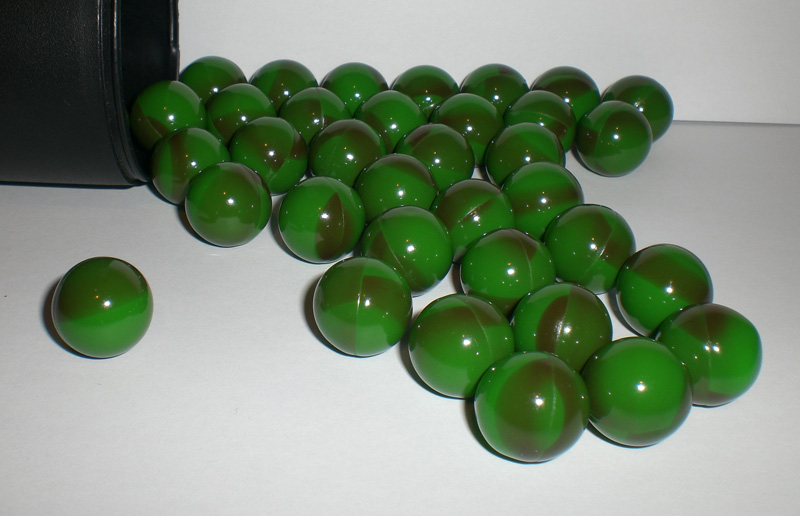If you are about to play paintball for the first time, AC Paintball welcomes you to this exciting game of strategy, action, and adventure. Feel free to browse our blog posts for tips and tricks on gear, strategy, equipment, and more. This post will look at the most popular question paintball newbies ask us: Does it hurt to get shot?
The answer is not as bad as you might think, so don’t allow fear of potential pain prevent you from trying paintball for the first time. Yes, getting hit with a paintball on the bare skin of a sensitive body part at a high speed, close range, and direct angle would certainly hurt quite a bit. However, in reality that is most often not the way it happens. With protective clothing and a safe range, most times you will only feel a strong thump on your body. There are many other precautions and safety measures paintball players can take to avoid and minimize pain.

How to Reduce Pain When Playing Paintball
1. Wear Layers of Clothing
Wear loose fitting clothing and as many layers as the weather will allow. Sweatshirts, sweatpants, and camouflage jackets are all great choices if it is cool enough outside. The thick cloth will absorb much of the impact and the paint will actually break less often. As you continue to play paintball regularly, it is a great idea to invest in specialized clothing that provides padding and extra protection in vital areas.
During the summer or in hotter climates this is obviously more difficult to do. However, try to wear at least a light a thin long sleeve shirt and light pants, plus gloves and goggles (check out our collection of high-quality rental gear if you don’t have your own). Even just one protective layer is ideal over bare skin.
2. Protect Sensitive Spots
The most sensitive areas to get hit are the hands, neck, top of head, and thighs. Always wear paintball gloves with padding and armor on the back to protect the hands if you are worried about pain. Find gloves that are comfortable and allow for flexibility as you will need to operate the marker quickly during games. The top of the head is vulnerable to shots when you are crawling toward an opponent, so make sure to have cover during this time. Your neck should be protected with almost any type of mask, but be careful when looking upwards as this will probably expose the neck.
Direct shots hurt more than angled shots, but it is obviously difficult to control the direction from which an opponent shoots you. Just keep this in mind and try to deflect a shot from the side if at all possible.
3. Follow Safety Rules
Each field will have their own safety rules to be explained before play, but they are generally some variation of the following. To be eliminated, a player must be directly hit on any part of their body, gear, or equipment. The paintball must break and leave a mark about the size of a quarter. When you are hit, yell “I’m hit” or “I’m out” to avoid duplicate hits. Hold your arms and marker in the air as you walk off the field so opponents know that’s where you are headed. If you aren’t sure if a hit counts as an out, yell “paint check” and a referee will come over and let you know.
4. Agree on the Surrender Rule
The surrender rule is in place generally to allow beginning players to get the hang of the game without the fear of being bombarded and shot painfully by more experienced players. The surrender rule allows players the option to surrender if an opponent has a direct shot on them within 10 to 15 feet. The opponent should yell “surrender,” “point blank,” or “freeze” to let the player know they can shoot them at a close range. The player should comply verbally or simply raise their hands to avoid being hit. If the player refuses and attempts to run or shoot, they will probably take a painful shot. However, it’s good sportsmanship to fire at the foot when in close range to minimize pain.
5. Keep a Strategic Position
Communicate and work with your team to avoid being bombarded by shots. One mistake rookies often make it forgetting that paintball is a team sport and not individual. Never run into the middle of the field blindly without any plan because this will overexpose yourself to the other team. It’s better to be strategic and develop a plan that involves cover from your teammates, a tree, bunker, or obstacle. Try to have an idea of where your opponents are at all times as well.
Position is very important in paintball. Get caught in a vulnerable position and you can get shot more times in a few seconds than a few hours time in a strategic position. Remember that there is safety in numbers and acting with teammates instead of alone greatly reduces your chances of getting shot.
“Paintballs green” by Makkonen – Self-photographed. Licensed under Public Domain via Wikimedia Commons – http://commons.wikimedia.org/wiki/File:Paintballs_green.jpg#/media/File:Paintballs_green.jpg
